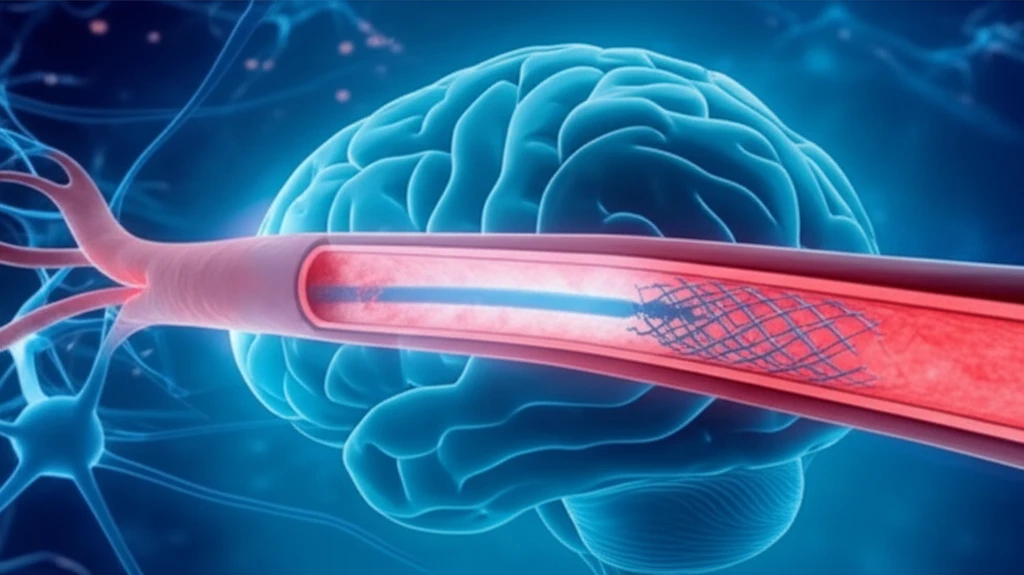
Drug-Eluting Stents: A Promising Solution for Intracranial Atherosclerosis?
"Find out how these innovative stents offer a safer, more effective approach to treating blocked arteries in the brain and preventing stroke."
Intracranial atherosclerotic disease (ICAD), a major cause of stroke worldwide, especially among Asians, Blacks, and Hispanics, involves the narrowing of arteries within the brain. Traditional treatments for symptomatic ICAD (sICAD) have been evolving, but new solutions are needed. The WASID and SAMMPRIS trials highlighted the challenges and limitations of medical management and traditional stenting procedures.
While aggressive medical management and risk factor control are essential, some patients require more. Percutaneous transluminal angioplasty and stenting (PTAS) techniques have been explored; self-expanding stents (SES) and bare metal stents (BMS) were common. However, the SAMMPRIS and VISSIT trials were stopped early because the stent groups showed increased perioperative complications and no long-term benefit.
The problem? In-stent restenosis (ISR), the re-narrowing of the artery after stenting. Drug-eluting stents (DES), widely used in coronary artery disease, slowly release medication to inhibit cell growth and reduce ISR. Now, researchers are exploring DES for ICAD to improve outcomes. This article examines a systematic review and meta-analysis of DES for ICAD, assessing their efficacy and safety compared to other treatments.
Do Drug-Eluting Stents Reduce Complications and Improve Outcomes?

To evaluate the effectiveness of DES for ICAD, researchers conducted a thorough review of medical literature. They analyzed 13 studies involving 336 patients (364 lesions) treated with DES, focusing on key outcomes:
- Perioperative Complications: Occurred in 6.0% of patients.
- Long-Term Complications: Occurred in 2.2% of patients.
- In-Stent Restenosis (ISR): 4.1% of patients experienced ISR.
- Symptomatic ISR: Only 0.5% of patients had symptomatic ISR.
The Future of ICAD Treatment: What Does This Mean for You?
This review suggests that drug-eluting stents are a relatively safe and effective option for treating intracranial atherosclerotic disease, offering improved outcomes compared to older stent designs and medical management alone.
However, the increased risk of perioperative complications in patients with severe stenosis highlights the need for careful patient selection and experienced operators. More research is needed to confirm these findings and optimize the use of DES in ICAD.
If you're at risk for or have been diagnosed with ICAD, talk to your doctor about the best treatment options for you. Drug-eluting stents may offer a promising solution, but the decision should be made in consultation with a qualified medical professional who can assess your individual risk factors and determine the most appropriate course of action.
